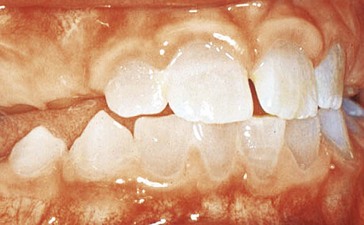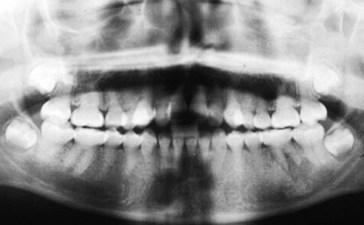38 Dentinogenesis imperfecta
History
Siobhan’s mother says she noticed that when the permanent teeth erupted they looked darker. Siobhan is very unhappy at school and refuses to smile for any photographs. When she talks she has the habit of covering her mouth with a hand so it is impossible to see her teeth. What can you see in Figure 38.1A? What key questions do you need to ask?
 Were the primary teeth similarly affected?
Were the primary teeth similarly affected?
The primary teeth erupted normally but very quickly chipped away becoming worn to gum level.
 Is anyone else in the family similarly affected?
Is anyone else in the family similarly affected?
Even before you have examined the mouth, the history suggests that Siobhan has an inherited defect. Figure 38.1A confirms your suspicion that this is dentinogenesis imperfecta (DI).
 Why is this DI and not amelogenesis imperfecta (AI)?
Why is this DI and not amelogenesis imperfecta (AI)?
The enamel is poorly adherent to the underlying dentine and easily chips and wears. The remaining primary canines and molars in Figures 35.1A, B are worn to gingival level and have a translucent opalescent appearance.
 What investigations do you need to do to confirm your suspicions?
What investigations do you need to do to confirm your suspicions?
Dental panoramic tomogram
If this is DI, the dental panoramic radiograph will probably show the following:
Stay updated, free dental videos. Join our Telegram channel

VIDEdental - Online dental courses





